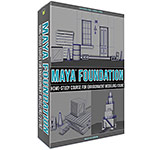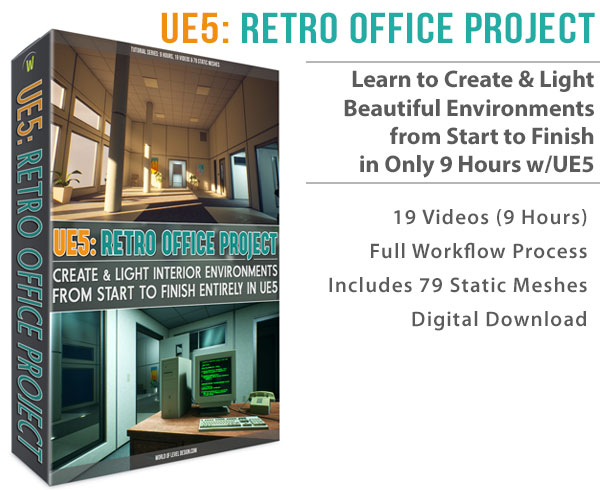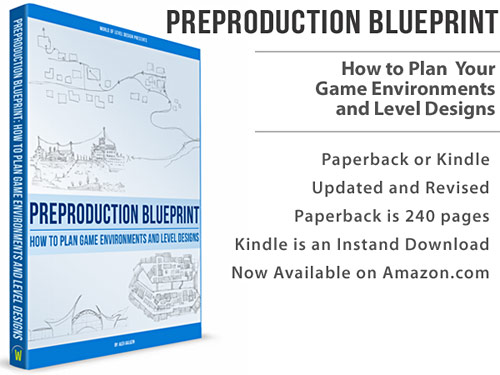World of Level Design™
Tutorials to Becoming the Best Level Designer and Game Environment Artist (since 2008)
Beginner's Guide to Game Prop Creation - Wooden Barrel with Maya, Substance and UE4
Category: Maya, Environment Art, Substance Painter, UE4
March 07, 2022

Number ONE game prop you should model as a beginner is a wooden crate.
Number TWO game prop you should model is a wooden barrel.
In this 4-part tutorial series you will get access to the complete process pipeline from beginning to end from modeling, UVing, texturing and exporting/importing a game ready asset into UE4.
Let's get to it...
Software Used
- Maya
- Substance Painter
- UE4
Table of Content 4-Parts:
- Modeling with Maya
- UVing with Maya
- Texturing with Substance Painter
- Exporting from Maya and Importing into UE4
Reference/Research
Every artist will tell you that modeling reference is essential to creating accurate objects.

Use images.google.com to search for the prop/asset you will be creating. Get as many images as needed. Use ArtStation for collecting style reference as well to see what has been done.
You also need to know a bit of context about your object, such as:
- What is the time frame of your environment? What year or time of history does this object live in?
- Is it damaged? Why? How was it damaged?
- What is the story behind your prop/asset?
In my book "Preproduction Blueprint" I go more in-depth about the entire preproduction process of an environment and level design.
Part 1: Modeling with Maya
Wooden Barrel is a cylindrical shape. So that is what I started with.
Initial size I used:
- Radius: 35
- Height: 100
- Subdivision Axis: 24
I introduced many additional edges into the geometry so I can reshape and change the silhouette curvature.

Additional edges were also inserted and then used for adding the metal rings around the wooden barrel.

I ended up beveling many corners of the wooden barrel for extra edge. This added to the triangle count but it makes the mesh look better because it avoids a hard 90 corner that many low-poly props have.
The hard edge can be improved through normal map bake from high-poly however I didn't want to create a high-poly mesh. I wanted to introduce this geometry with a bevel. I only used one segment for the bevel.
How do you decide if you need to add bevels or not?
You should always know what the outcome of your project/asset/prop will be.
- Do you need it low-poly? Do you have a target triangle count to hit?
- What is the target platform will you be using this prop/asset in? PC, mobile?
If you don't know this then you can't make a decision what to add or what to leave out.
I chose to go with a bit heavier triangle count. Low-poly was 1,504 before the addition of bevels. After I added additional detail, my triangle count jumped to 2,988

I also added a cork on the side of the barrel for additional detail along with some metal bolt straps:

After modeling is done, you are ready to UV.
Part 2: UVing in Maya
UVing is often a time consuming. But if you know few techniques and tricks then it can become a quick and enjoyable process.
In fact for this wooden barrel it was very quick.
- Cylindrical projection for the rounded part
- Planar projections for top and bottom
- Make cuts along edges where you want a texture seam
- Modify > Unfold
You simply select the faces to project then go to Create > Planar or Cylindrical:

Select edges where you want to make a cut then Modify > Unfold for any overlapping UVs. I use Modify > Unfold (Unfold3D) a lot. This one tool can help unwrapping objects a lot faster.

I kept the metal ring UVs separate from the wooden UVs to make it easier to texture. Anytime you have a separation of material/texture then you should also separate the UV shells.
Here is the final UV layout:

Part 3: Texturing with Substance Painter
Substance Painter is a time-saver. Texturing process used to be tedious and time-consuming if you had to create all textures and masking/blending yourself.
Now with Painter or Mixer you can speed this process up to just a few hours, depending on complexity of the mesh.
Smart Materials
Smart Materials give you a quick way to use something right away that contains many layers for you to adjust for your prop/asset.
I used 2 Smart Materials for the wooden planks, metal rings and 1 regular Material for the cork.
- Wooden Barrel: Wood Beech Veined
- Metal Rings: Steel Rust Surface
- Cork: Wood Rough

The key is changing Smart Materials to fit your object's needs. I went through all the layers from the Smart Material and changed color, added color variation, adjusted dirt, rust intensities etc. Go through it layer by layer.
You can enable/disable visibility of each layer to see what effect it produces.
Don't ever use Smart Materials as-is. They are good starting points but then you have to add your own unique additions to it. At the very least, change them with the layers provided.

Plank Detail
Since I didn't model individual planks on the wooden barrel, I had to do this within the texture.
I added wooden plank detail by:
- New Layer (Empty)
- Enable following Channels: Base Color, Height and Roughnes
- Choose darker color
- Change Height to -.5
- Roughness to .9 (not shiny)
- Use Dirt 1 brush or another brush to paint the planks

Additional Custom Dirt/Rust
I added more custom dirt and rust. This helps to introduce yoru own unique touch to the prop/asset.
For Wood Dirt I used a Generator:
- Add Fill Layer and choose color for dirt
- Add Black Mask
- Add Generator for the Mask
- I used Dripping Rust
- Adjust settings

For Steel Rings Rust I used a Smart Mask:
- Add Fill Layer and choose color
- Add Black Mask
- Add a Smart Mask to the Black Mask from the Shelf
- I used Edge Rust
- Adjust settings

Exporting Textures
You are now ready to export your textures from Substance Painter. Go to File > Export Textures.
Export with the following settings:
- Define output directory (where will the textures be saved)
- Output template: UE4 packed
- File type: png 8-bit
- Size: based on each texture set's size (which is 2k textures)
- Click Export

Packed texture means that you will have one texture that will contain 3 textured packed into each color channel. I like using an acronym ARM (RGB) to remember which channel belongs to which texture.
- R = Ambient Occlusion
- G = Roughness
- B = Metallic
Part 4: Export/Import into UE4
Go to File > Export Selection and export your meshes from Maya for UE4 with the following settings:
- Files of type: FBX export
- Geometry: Smooth Mesh and Smoothing Groups enabled

On UE4 Static Mesh import I enable the following settings:
- Generate Missing Collisions
- Generate Lightmap UVs (enable if you want UE4 to generate Lightmap UVs, disable if you have your own custom Lightmap UVs)
- Material Import Method: Do Not Create Material
- Do Not Import Textures
Important: after importing textures into UE4, open up the Packed texture that contains Ambient Occlusion, Roughness and Metallic. Then disable sRGB.

Create a Material and connect the textures like so:

The best way to assign the Material is through the Static Mesh editor, so the Material is assigned to all instances of the mesh. Double-Click on the Static Mesh in the Content Browser and open up Static Mesh editor:

Or you can drag-drop the Material onto each Static Mesh placed in the level.
If you want to make your mesh have physics:
- Select the Static Mesh
- In Details Panel enable Simulate Physics (this will turn them to Movable meshes or dynamic)
- Change the MassinKG

Final mesh in UE4, ready to be used:

Maya Home Study Course Series
In Module 1 of "Maya Foundation Home Study Course" you'll learn how to get started with Maya. In Module 2 you will learn how to model. In Module 3 you will learn how to UV.
Home Terms of Use/Trademarks/Disclaimers Privacy Policy Donate About Contact
All content on this website is copyrighted ©2008-2024 World of Level Design LLC. All rights reserved.
Duplication and distribution is illegal and strictly prohibited.
World of Level Design LLC is an independent company. World of Level Design website, its tutorials and products are not endorsed, sponsored or approved by any mentioned companies on this website in any way. All content is based on my own personal experimentation, experience and opinion. World of Level Design™ and 11 Day Level Design™ are trademarks of AlexG.
Template powered by w3.css



 Maya Foundation: Home-Study Course - Model and UV Environments
Maya Foundation: Home-Study Course - Model and UV Environments Substance 3D Painter Essentials - Master Texturing
Substance 3D Painter Essentials - Master Texturing UE5: Fundamentals Vol.1 - Create with Unreal Engine 5
UE5: Fundamentals Vol.1 - Create with Unreal Engine 5 UE5: Retro Office Project - Create Beautiful Interior Env
UE5: Retro Office Project - Create Beautiful Interior Env UE5: Master Material Creation - Create Master Materials in UE5
UE5: Master Material Creation - Create Master Materials in UE5



